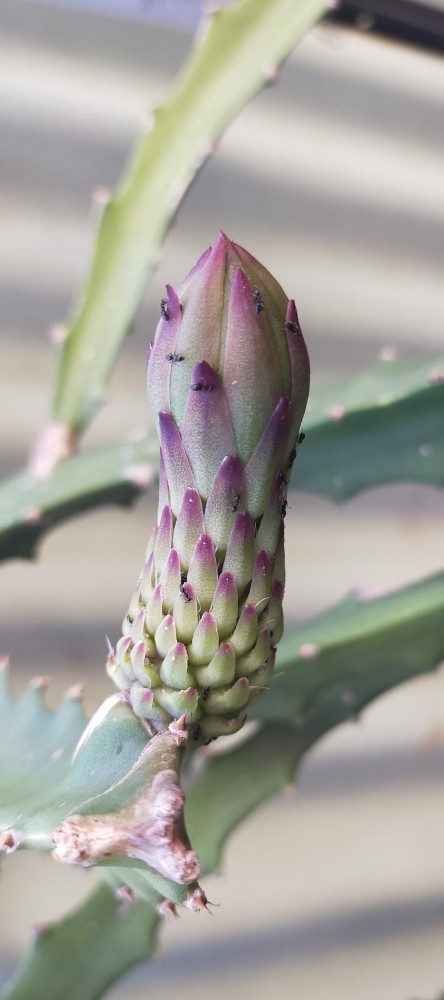Overview
Selenicereus megalanthus, cv. Yellow Colombiana


Other names: Yellow Dragon, Thorny Yellow, Yellow Megalanthus, Common Yellow, Yellow
Pollination: self-fertile
This variety is unique in my collection in that it belongs to entirely different genus, Selenicereus, as opposed to the typical Hylocereus. This is due to its unique characteristics of which there are both benefits and drawbacks. The branches are thinner than average, with a highly pronounced rib that makes it easy to identify. Growth is much slower, at least in my climate, compared to other varieties, and everything about this plant is slow (budding, fruiting, etc.). However, the taste is so unique and delicious that it is still worth growing if you can’t get your hands on Palora (similar, but faster growing with bigger fruit). It is the sweetest of all dragon fruits, with some people likening it to sugar cubes. I personally think it has more of a honey taste, especially refreshing when chilled.

Buds
The buds of Colombian Yellow are highly unique, both in timing and appearance. They first appear at the end of the dragon fruit season, once it has cooled down and most of the other action has finished. The spherical bulb-like protrusions are initially covered in a sweet sap that hints of future sweetness. Then, very slowly, they begin to lengthen, as tiny thorns emerge at the base of the bud. After what feels like an eternity, the buds finally become so elongated that you’re worried they might snap, and then, finally, they open in spectacular fashion.



Flowers
Yellow Colombiana also has particularly unique, highly fragrant flowers. By this stage in their development, it is probably winter, and you may need to force them open, especially if it is cold and wet. Dampness reduces pollen fertility, so they may need bagging as well. Once open, they form a sort of bowl shape that is surprisingly large for such a thin branch, though the species name, megalanthus, actually means “large flower” so perhaps this is not so surprising after all.


Fruit
If you thought bud progression was slow, then fruit progression is even slower, sometimes taking up to six months. This is not such a bad thing, however, as then they are ready at the start of the next dragon fruit season, before the action has really started. While the fruit is thorny, the thorns brush off easily once ripe, when the outside is almost completely yellow and the long wait is finally over. However, the taste makes it all worth it.

